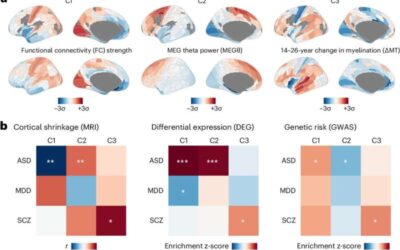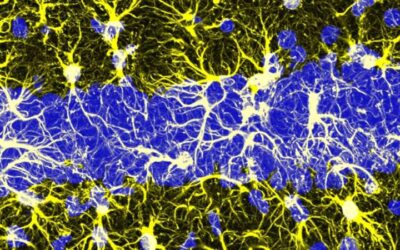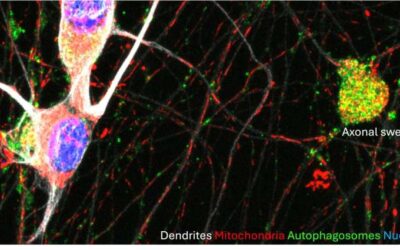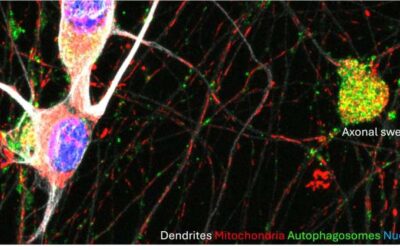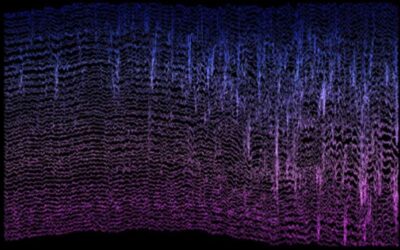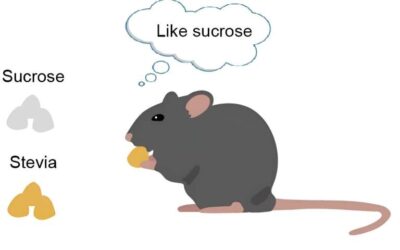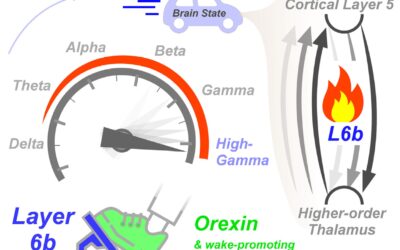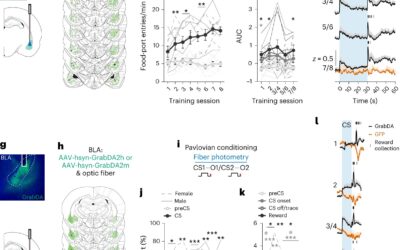The organization of the human brain develops over time, following the coordinated expression of thousands of genes. Linking the development of healthy brain organization to genes involved in mental health conditions such as autism and schizophrenia could help to...
MEDICALXPRESS
Study shows that astrocytes integrate information about past events in their soma
Neurons are known to communicate and integrate information they receive from their dendrites, branch-like structures extending from their body. In contrast, the activity in astrocytes, a class of star-shaped glial cells found in the central nervous system (CNS), has...
Study finds that the transport of mRNAs into axons along with lysosomal vesicles prevents axon degeneration
RNA granules, sites for the storage, transport, and regulation of RNA molecules within cells, are transported along axons and then translated locally, far from the cell body. Recent studies suggest that these granules can "hitch a ride" from lysosome-related vesicles,...
Study finds that the transport of mRNAs into axons along with lysosomal vesicles prevents axon degeneration
RNA granules, sites for the storage, transport, and regulation of RNA molecules within cells, are transported along axons and then translated locally, far from the cell body. Recent studies suggest that these granules can "hitch a ride" from lysosome-related vesicles,...
Exploring the origins of excitatory and inhibitory neuronal tuning in the postsubiculum
Brain cells can be broadly divided into two categories: inhibitory and excitatory neurons. Excitatory neurons are cells that support the generation of electrical impulses in postsynaptic neurons, thus prompting the activation of cells in specific brain regions....
Study suggests that stevia is the most brain-compatible sugar substitute
Given the known risks of consuming high amounts of sugar, today many people are looking for alternative sweeteners that produce a similar taste without prompting significant weight gain and causing other health issues. While research suggests that the brain can tell...
Study suggests that living near green spaces reduces the risk of depression and anxiety
Over the past decades, a growing number of people have migrated to urban areas, while the size and population of rural areas have drastically declined. While parks and other green spaces are often viewed as beneficial for the well-being of those living in cities and...
How myeloid cell replacement could help treat autoimmune encephalomyelitis
Autoimmune conditions such as multiple sclerosis (MS) are disorders of the immune system associated in this case with demyelination of the central nervous system (CNS). The term demyelination describes damage to the layer covering nerve fibers in the brain and spinal...
Study reveals the strong impact of layer 6b neurons on cortical activity
Layer 6b, the deepest layer of the mammalian brain's cortex, has recently been the focus of numerous neuroscience studies. Despite the interesting findings gathered in recent years, the role of this deep cortical layer remains poorly understood.
Study finds that dopamine projections to the amygdala contribute to encoding identity-specific reward memories
Over the course of their lives, humans build subjective internal models outlining the associations between specific environmental stimuli and rewards that could be gained from interacting with them. These experience-based models allow them to infer what benefits they...

